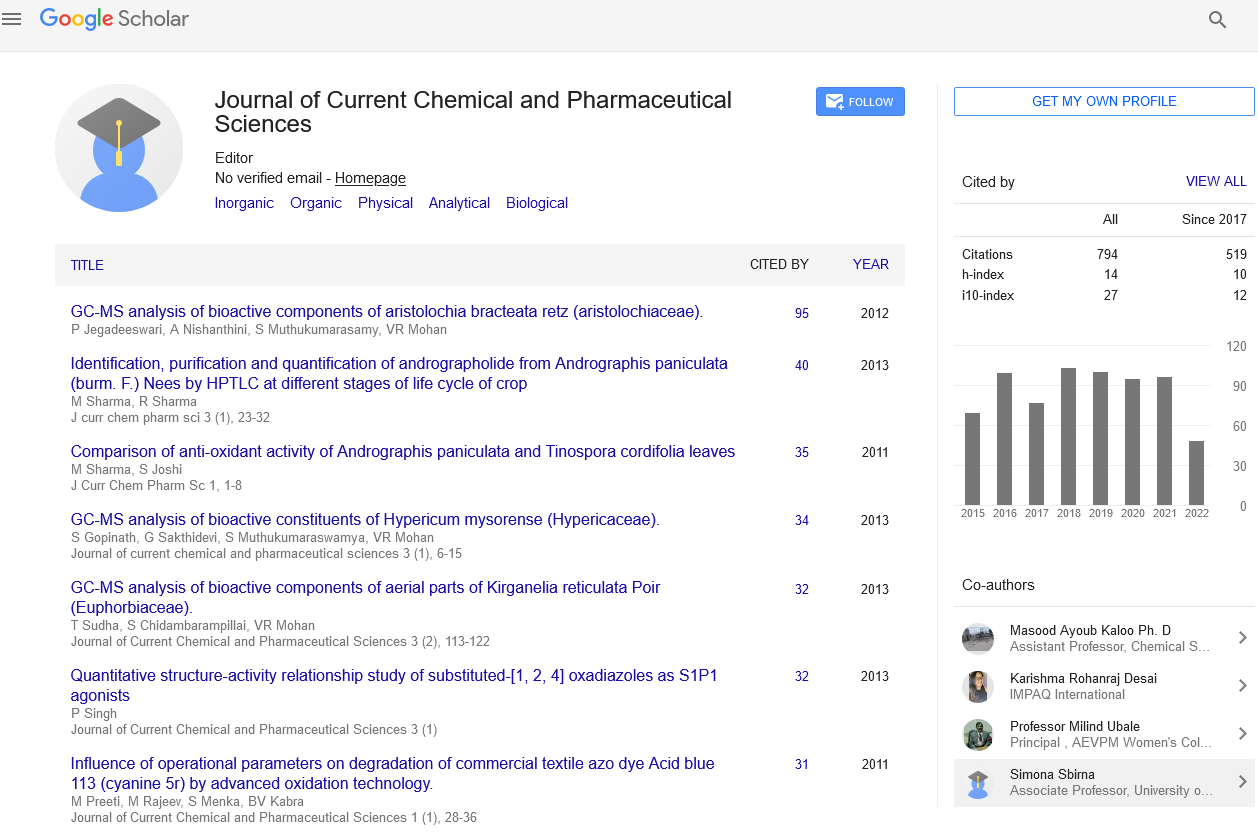Abstract
Quantum Modeling of Ferric Iron (Fe3+)-Condensed Tannins Complexes
Author(s): Kicho Denis YAPO*, Rorbert Boka N'GUESSAN, Benjamine Amon ASSOMA and Lucie Affoue BEDE (Cote-d' Ivoire)The condensed tannin-iron complex formation is one of the major causes of iron deficiency anaemia. Although, condensed tannins have beneficial virtues for the body and, as for iron, it participates in vital function such as breathing. In order to prevent this complex formation, we have undertaken to understand the complexing mechanism. We use quantum molecular modelling using quantum descriptors (energy gap, ionization energy, hardness, electrophilic index and softness) between ferric iron (Fe3+), major form of iron in the diet and catechin, epicatechin (major form of condensed tannins in diet). Calculations were made in gas phase using density functional theory (DFT) B3LYP/6-311+G (d,p). The results obtained show that we could have as complexes formed at the level of the organism catechin 4_BS, Epicatechin 2_BS that in strong magnetic field; Catechin 5_HS and Epicatechin 5_HS in weak field. We also notice that catechin and epicatechin have a low probability of complexing with ferric iron (Fe3+) with the hydroxyl group at position 3 whether in a strong field or a weak field. In further studies, more in-depth simulations coupled with experimentation, more understanding of these mechanisms will be given hoping to find solutions that would prevent the formation of condensed tannin-iron complexes.
